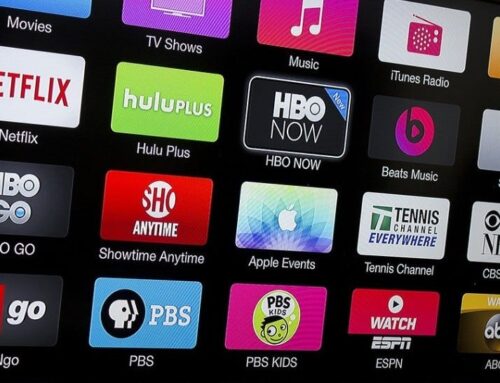Cutting the Cord: Is Streaming Really Cheaper Than Cable?
As more consumers consider cutting the cord, the debate between cable and streaming services has intensified. With the rising costs of cable TV and the allure of streaming platforms, many are left wondering which option offers the best value for their money. Using data from Consumer Reports, we’ll delve into the cost comparison between cable and streaming services to help you make an informed decision.
The Cost of Cable
Cable TV has been a staple in American households for decades. However, its cost has steadily increased over the years. According to Consumer Reports, the average monthly cable bill is around $217 when you factor in all the associated fees and taxes. This figure includes costs for premium channels, equipment rental fees, and additional service charges. This figure also includes your wireless service which you have in order to have any streaming service. The average American pays $80 per month for their internet – some as much as $200.
Hidden Fees
One of the main criticisms of cable TV is the prevalence of hidden fees. These can include broadcast TV fees, regional sports fees, and additional fees for HD service or DVR. These costs can significantly inflate your monthly bill, making cable an expensive option for many households.
Negotiations
The July 2024 Consumer Reports on “Cable TV or Streaming” noted that with the rise of cord cutters, cable TV providers have been negotiating with consumers and in most cases, consumers have been successful and winning concessions of better pricing. And in some cases, consumers may end up paying less than if you cut the cord and switched to streaming.
The Appeal of Streaming Services
Streaming services like Netflix, Hulu, and Disney+ have revolutionized the way we consume media. These platforms offer a wide variety of content at a fraction of the cost of traditional cable. But is it really cheaper than cable?
Subscription Costs for Streaming
The average cost of streaming services can vary widely depending on the platforms you choose. Here’s a breakdown of some popular services and their monthly costs:
- Netflix: $15.49 for the standard plan
- Hulu: $14.99 for the ad-free plan
- YouTube TV: $77.62
- Max: $17.01
- Netflix: $24.45
- Disney+: $7.99
- Amazon Prime Video: $8.99
- HBO Max: $15.99
- ESPN+ – $10.99
- NBA League Pass – $14.99
- NFL+ – $6.99
The average consumer is paying $63.45 per month while moreover if they subscribed to all top streaming services in 2024 it would cost an estimated $491.92 per month, excluding niche services, with significant overlap in channels offered. While the $63.45 appears cheaper than the average cable bill, with an average $80 for internet, we are at $143.45 per month.
Additional Costs
While individual streaming services themselves are affordable, there are other costs to consider. For instance, as already mentioned a high-speed internet connection is essential for streaming, which can add $60 to $100 to your monthly expenses. Additionally, if you want to watch live sports or local news, you might need to subscribe to additional services like Sling TV or YouTube TV, which can cost between $35 and $80 per month.
Bundling Streaming Options
Both cable and streaming services offer bundling options that can provide additional savings. Cable companies often bundle TV, internet, and phone services, which can reduce the overall cost. On the other hand, streaming services like Disney offer bundles that include Disney+, Hulu, and ESPN+ for a discounted rate.
Conclusion: Which is Cheaper?
Ultimately, the cost-effectiveness of cable versus streaming depends on your viewing habits and needs. If you’re a sports fan or someone who values a wide variety of live channels, cable might be the better option despite its higher cost. Or if your viewing habits are limited, you can still get basic cable with 50 channels for as low as $40/month. However, if you’re looking for flexibility with a multitude of viewing options, streaming services offer a compelling alternative.
Using Consumer Reports data, it’s clear that streaming can be significantly cheaper than cable, with limited subscriptions. But, as noted in the example above, YouTube TV, Max and Netflix alone can cost a consumer $119.08 per month. By carefully considering your entertainment needs and taking advantage of bundling options, you can find the right balance between cost and content.
Tips for Evaluation
- Evaluate Your Viewing Habits: Identify which channels and shows are most important to you and see if they’re available on streaming platforms.
- Negotiate: Streaming offers little in the way of negotiation, but cable TV providers have becoming more open to cutting a deal
- Start Small: Begin with a few key streaming services and add more only if necessary.
- Consider Free Trials: Many streaming services offer free trials, allowing you to test the platform before committing – cable TV providers also offer free trials to add-ons
- Monitor Your Usage: Regularly review your subscriptions and cancel any services you’re not using.
By following these tips, you can maximize your savings and enjoy a tailored entertainment experience that meets your needs. Happy viewing!





